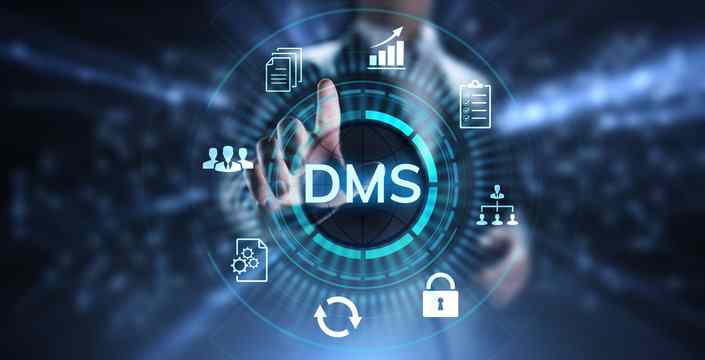For any entire organization, it is vital to have an option to store and manage documents from the single source of truth where all employees will have access to required information and will be able to manage documents in order to do their job responsibilities. Especially important it is for organizations which are looking for switching from paper document management to electronic document management which is a must-have option in 2024. Without a single source of knowledge regarding enterprise documents, there are the high risks of losing documents, getting them edited by inappropriate employees and even losing vital data that would otherwise cause massive negative outcomes for the company, including risks for business continuity. This makes document management software solutions as crucial as CRM (Customer Relationship Management) software.
A business that wants to be successful can’t tolerate such issues when it comes to documentation. Therefore, document management systems became extremely popular as they offer full-featured functionality for document management that provides unbelievable efficiency and productivity compared to manual operations.
We are going to introduce such systems in this topic and tell you all about them.
What is DMS (Document Management System)?
A DMS (Document Management System), also knownas as Electronic Document Management System, is a software application that allows users to create, edit, store, manage, delete and provide access to documents and digital files within the organization or to all the users of the software. It has some advanced features that are offered to improve the efficiency of document management, including such as access control, document sharing, document copying, and so on.
Document management solutions can be different by their features, pricing policy, and infrastructure solution – cloud-based or on-premises.
How do DMS (Document Management System) programs work?
A DMS (Document Management System) plays a pivotal role in modern organizational workflows, facilitating seamless execution of tasks associated with document registration, segregation, classification, sharing, and archiving. At its core, a DMS serves as a centralized repository for all types of documents, ensuring they are efficiently organized and easily accessible whenever needed.
One of the fundamental features of a DMS (Document Management Solution) is its ability to create a structured hierarchy for documents, typically represented in a tree-like structure. This hierarchical organization enables users to establish a systematic layout tailored to the specific needs of different activities or departments within the company. Such a structured approach not only enhances the clarity and organization of documents but also streamlines processes by providing a clear roadmap for document management. This ensures fast access to documents, quick resolution of document-related tasks, effective document workflow, version control, and finally elimination of a need to use paper files.
In addition to organizing documents, a modern document management system offers a plethora of capabilities aimed at optimizing document-related tasks. For instance, robust categorization and classification functionalities allow documents to be tagged with metadata, making it effortless to search, retrieve, and filter them based on various criteria such as content type, date, author, or keywords. This empowers users to swiftly locate the exact document they require amid vast repositories of information.
Document storage and archiving.
All the documents created in the document management software are stored in the single database where all employees can access them in accordance with their access levels provided by the manager to make sure that there are the differentiation of access control for various departments and employees.
Organization and document decreeing.
The vital part of document management is the document segmentation in order to let employees access documents of same format, date of creation, person responsible for the document creation – owner of the document, and other criteria. Such segmentation makes access easier and faster.
Documents searching and view.
It is important to make sure that there is an option to search for documents with the use of filters and search engine in order to find any documents quickly. For large enterprises and even small companies, where there can be tens of new documents created in one day, it is vital to have such a feature available, so most document management systems offer this feature as a basic option.
Document sharing and versioning.
Sharing documents is a crucial feature as different departments or employees often create documents that have to be visible and accessible for other employees that are involved in the exact project or department. Also, you have to access total control over different versions of documents in order to make sure that you will be able to restore original documents in the case of a need or review past versions to see how they were edited.
File sharing has also to provide access control feature in order to provide employees with access levels that are correlated to their job responsibilities and their status in the company to avoid inappropriate access and editing. Also, there are some confidential documents that can’t be accessed by no one excluding employees with specific access level and rights.
Version control
Version control is one of the key features of DMS or ECM (Enterprise Content Management) software, as it allows you to manage the changes in digital documents and restore the previous versions of digital documents when required. This is a thing that paper-based documents lack, and this also ensures document security from unauthorized access, which is vital for sensitive documents and business documents with limited access.
Components of cloud-based DMS services
1. Document repository – a central repository for document categorization, document imaging, document routing, and so on.
2. OCR (Optical Character Recognition) – an effective document management feature that allows cloud-based document management system to recognize text on images, images of paper-based documents, scans, etc.
3. Document capture – an option to scan paper documents.
4. Workflow management – a feature to automate manual processes and repetitive tasks.
5. Document management services – an option to manage any type of document, provide version control, document categorization, content creation, other business processes, etc.
6. User interfaces
7. Mobile app (optionally)
8. Regulatory compliance – compliance features.

